
What is the problem?
The state is failing to fulfill the obligation assumed in the regional development strategy for 2021-2027 to turn 15% of the state area into protected areas by January 1, 2030. As of January 1, 2023, according to the Ukrainian Nature Conservation group, 3.52% of the necessary lands were protected according to the Strategy until 2030.
What is the solution?
Environmental organizations and environmentalists keep their fingers on the pulse and sound the alarm when they see threats to nature. It is essential to join their initiatives and thus create public pressure that officials or irresponsible businesses can no longer ignore.
Rubryka has collected several relevant initiatives for which every vote of support is important.
How does it work?
How to save Borzhava polony
Sign an appeal against windmills on the mountain range
Polonyna Borzhava is a mountain massif on the Polonyna Ridge in the Carpathians. This is a nature conservation area of international importance — an object of the Emerald Network of Europe and part of the ecological network of the Ukrainian Carpathians.
Almost 100 species of birds live here, including those listed in the Red Book of Ukraine, and red-listed plants grow here. Several bird species' international migration routes pass through Borzhava, including rare ones protected by national and international legislation.
On the slopes of Borzhava, unique ancient forests, and primeval forests have been preserved, which slow down the development of floods for the rivers of the Tisza basin. These are places where you can often see the tracks of a brown bear, a lynx, a wolf, and a forest cat.
Eight territories of the Nature Reserve Fund of Ukraine are located around the Borzhavskyi ridge and directly on it. Also, here is the planned territory of the Nature Reserve Fund of Ukraine, which was reserved: it is the planned national natural park "Zhdymir" with an area of 21,600 hectares.
All this is information from the appeal made public by the environmental protection organization Environment. People. Law. Anyone who cares can support the appeal.
Authors and signatories, of whom there are already hundreds, call to stop the construction of the wind power plant on the Borzhava meadow.
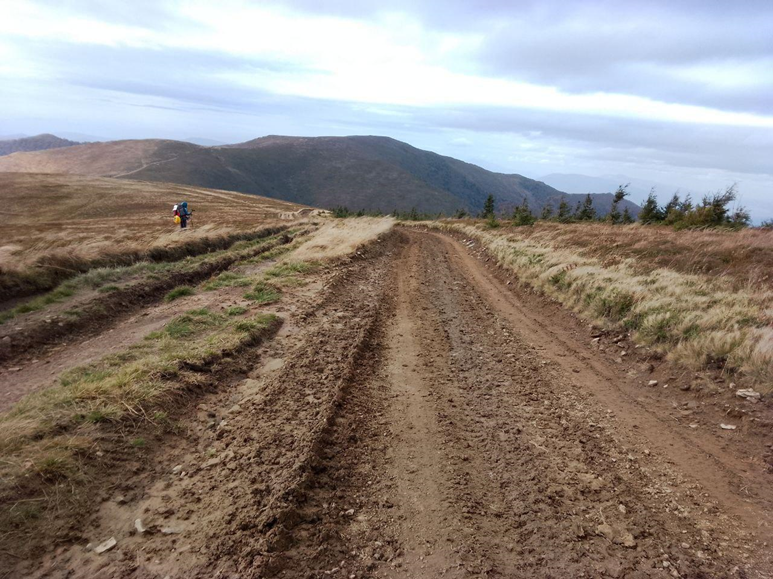
Paving of the road in Polonyna Borzhava, October 2023/Illustration from the appeal of environmentalists
In October, a dirt road began to be built through the meadow area, which has already damaged the high-altitude vegetation and soil, causing surface erosion processes that risk only intensifying in the future.
Unfortunately, this is the case when the wrong place was chosen for wind energy development, which is promising and necessary for Ukraine. This does not consider the current environmental damage from the construction of 34 wind turbines and the required infrastructure, which will be greater than the future benefits of environmentally clean wind energy.
The appeal is addressed to the president of Ukraine, the Minister of Environmental Protection and Natural Resources, and the Cabinet of Ministers of Ukraine. It was signed by heads and members of several nature protection organizations, scientists, guides, and tourists.
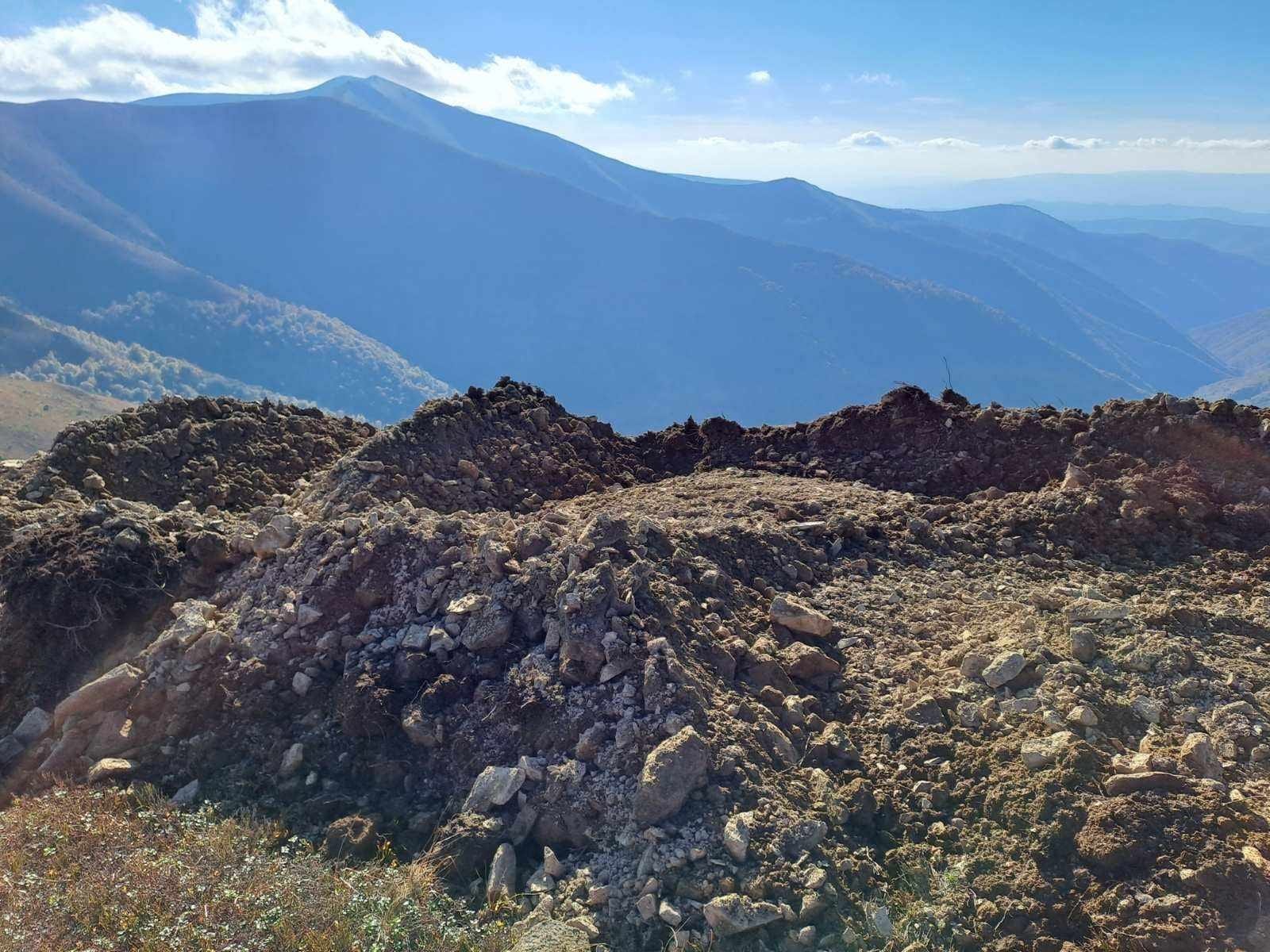
The condition of the Borzhavskyi ridge due to the construction of the road/Photo from the Facebook page of the Save Borzhava initiative
The official of the Zakarpattia Regional Council, Ivan Duran, appealed to the regional prosecutor's office and the State Environmental Inspection to organize a check of information about constructing a dirt road on the ridge and identifying the people who destroyed Borzhava. The SEI has already stated that the environment has been greatly damaged.
This story has been going on since 2017, and as late as 2019, there were rumors that the site for the wind farm was chosen incorrectly. The appeal's authors are convinced that "during the preparation of the environmental impact assessment report, the designers deliberately underestimated the impact on natural ecosystems and provided false information regarding the destruction of rare species and biotopes in the Borzhava meadow."
The NGO Ecosphere is also convinced: "The European Green Course, the political initiative of which in Ukraine is the approved Energy Strategy until 2025, does not envisage achieving energy independence at the expense of destroying forests, biodiversity hotspots, and valuable natural territories." Public activists even dedicated a separate video to this situation.
Defenders of nature are convinced that wind turbines and their infrastructure in the meadow will destroy "the habitats of rare, endangered, and endemic species of animals and plants, as well as the territory that has been used for centuries for the development of animal husbandry and the collection of non-wood products (blueberries)."
If you support the opinion that constructing a wind power plant on the Borzhava meadow is unacceptable and should be stopped, sign the appeal at the link.
How to help save the lands of Cherkasy from being plowed
Remind about the creation of the park Hirskyi Tikych
Cherkasy region is one of Ukraine's most cultivated areas, with few natural oases left.
Recently, Petro Testov, the head of the expert department of the NGO Ukrainian Nature Conservation Group, visited the Cherkasy region, and what he saw prompted him to be reminded of the need to create a national nature park Hirskyi Tikych: "Now, the sight is very sad. Remains of nature huddle at the edges of gullies and ravines. Every year, these remnants become less and less — a typical situation when, according to Google images, a steppe or meadow is two to three years old, but in fact, it is a freshly plowed field — almost to the edge of the water."
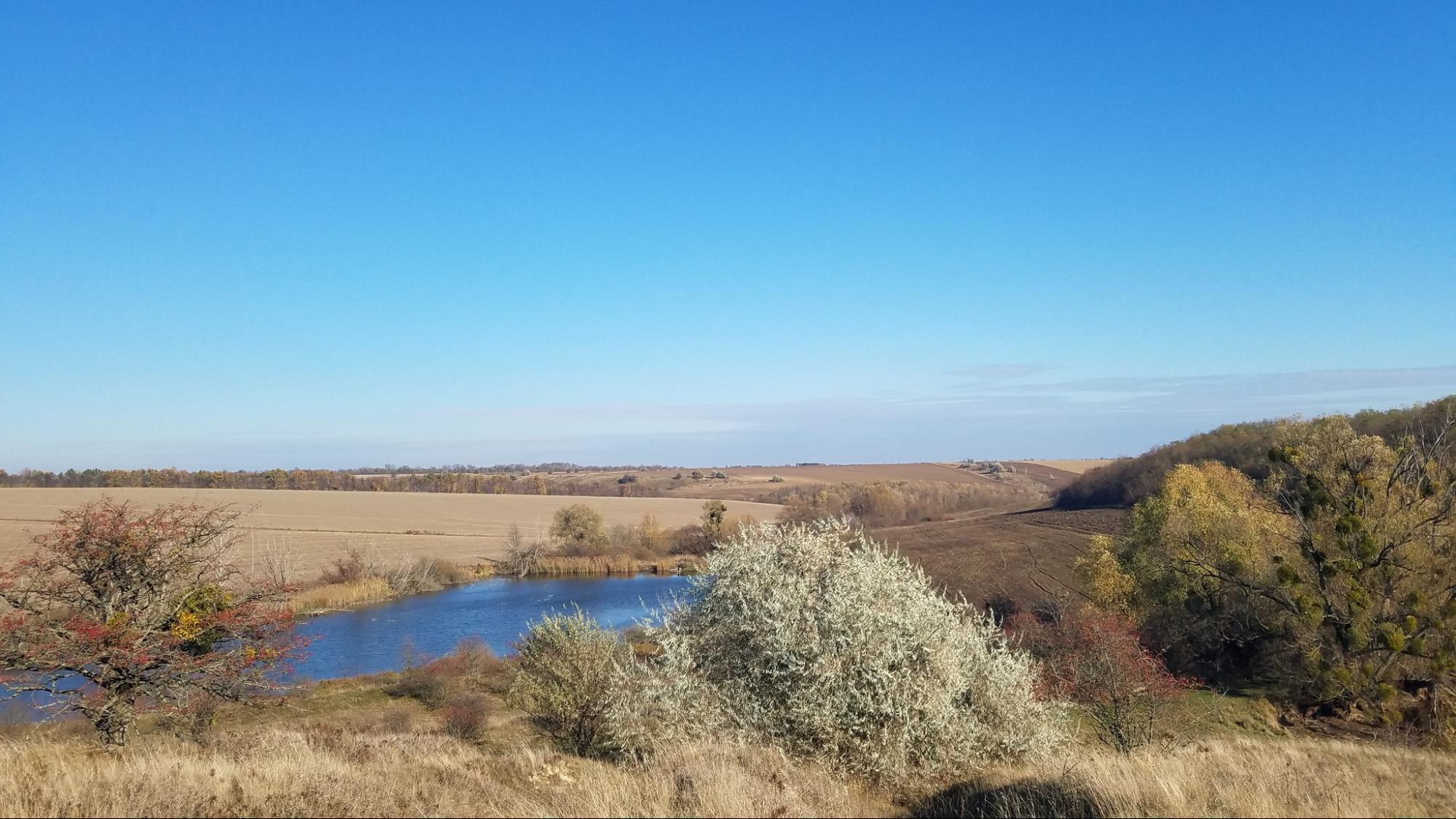
Fields close to the reservoir in Cherkasy region/Photo by Petro Testov
"And it will only get worse. The region's communities refuse to agree to the creation of new protected areas, but they are happy to distribute the remnants of the steppes and meadows for new plowing. Money," wrote Testov.
The ecologist is convinced that the only chance to preserve the remnants of nature in the region is to quickly create the national park Hirskyi Tikych on reserve lands that were transferred as part of the land reform and for which approval is not required. In addition, this area has significant tourist potential.
Testov notes that, unfortunately, he does not see the political will of the regional government and the relevant ministry to create such a natural park.
But we have something to motivate them, for example, with the argument that according to one of the EU directives, we should turn 30% of agricultural land into nature reserves. Rubryka, among other things, wrote about the plowing of Ukrainian lands here. Another motivation is the argument that the intention to create the national natural park Hirskyi Tikych was voiced by scientists and supported by the authorities back in 2017.
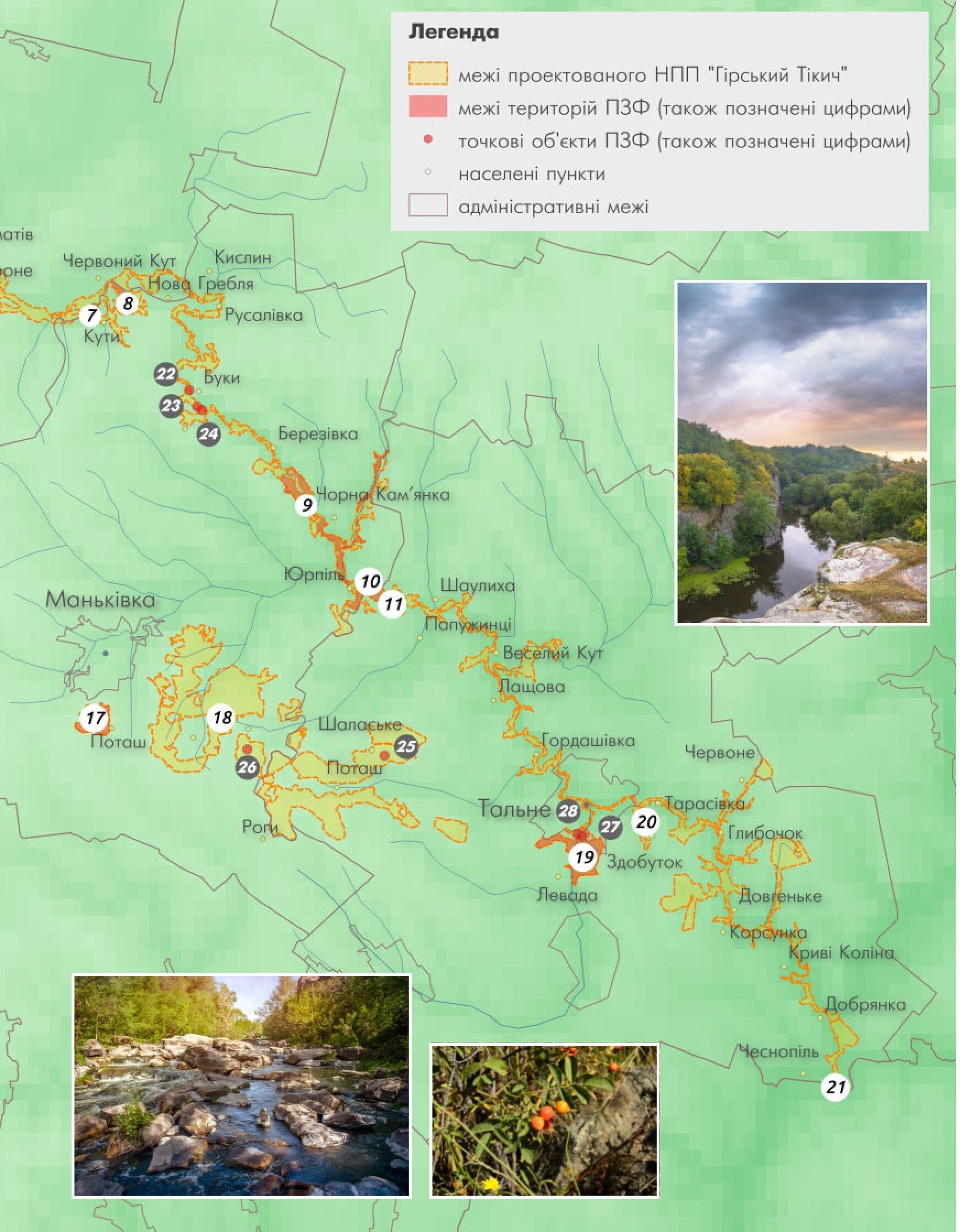
Screenshot from the publication of the National Ecological Center of Ukraine/Screenshot from the NECU website
The scientists substantiated the creation of the protected zone as follows: "The river-valley landscape of the Hirskyi Tikych River is particularly valuable from the point of view of nature conservation, which is characterized by a peculiar geomorphological structure caused by the outcrops of crystalline rocks of the Ukrainian Crystalline Shield, a diverse vegetation cover with a combination of the steppe, forest, meadow, swamp, aquatic, petrophytic vegetation, as well as numerous localities of plant and animal species subject to different levels of protection."
The solution in this case is to write an appeal to the ministry or the Cherkasy Regional Military Administration, create appropriate petitions, and write about the problem on social networks. Fortunately, the authorities in Ukraine are paying attention to this, and public pressure can work.
How to preserve Kyiv's natural oases
Sign the petitions about the creation of Vikova Dibrova and the protection of Lake Vidro
Activists of the Kyiv Ecological and Cultural Center (KECC) are concerned about the possible construction of the Tsyhanshchyna tract in the Holosiivskyi district of Kyiv. This is a beam, a part of the steppe, and an old oak forest with 200-year-old oaks. The KECC notes and emphasizes: "Unreserved oaks of this age (200 years) are practically non-existent in Ukraine now; all of them have been cut down."
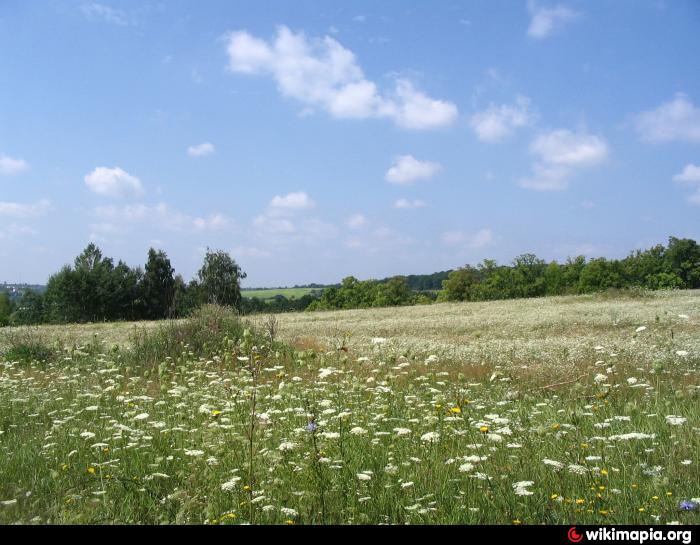
Tsyhanshchyna tract/Photo from wikimapia.org
Ksenia Semenova, an official of the Kyiv City Council, together with KECC ecologists, prepared and registered the draft decision of the Kyiv City Council on the creation of the Vikova Dibrova natural monument with an area of 18.7 hectares, and a corresponding petition was registered on the Kyiv City Council Electronic Petitions website.
"On the slopes of the stream and nearby, the remnants of deciduous (broad-leaved) forests with the participation of hornbeam and oak, as well as areas of meadow-steppe vegetation, which have degraded almost everywhere on other Kyiv mountains… The local slopes form the landscape of the right bank of the Dnipro and must be preserved from construction," the document says.
Five red-listed animals live here: the stag beetle, the common copperhead, the European wide-eared bat, the common xylocopa, and the small raccoon. Ecologists note that on the slope of the stream, burrows of the European badger, also a rare animal in Ukraine, were found, as well as birds, some of which, like tits and woodpeckers, are protected by the Berne Convention.
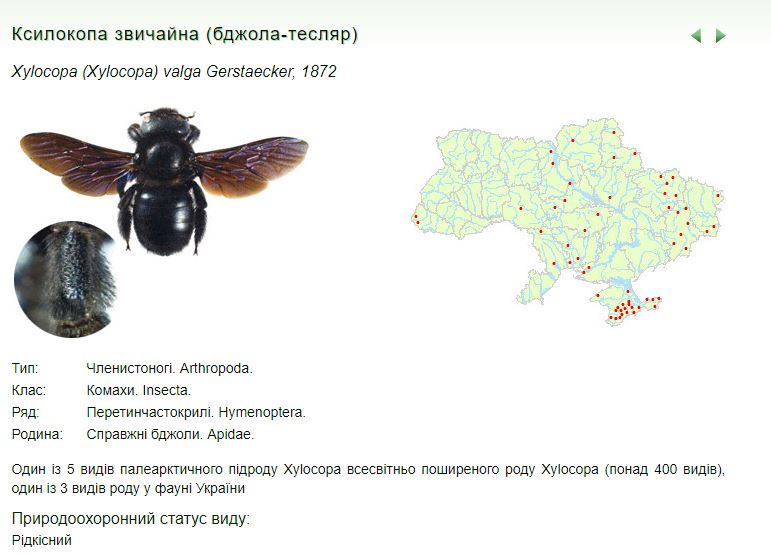
On the screenshot: Information about the common Carpenter bees or Xylocopa on the website of the Red Book of Ukraine/Screenshot from the website of the Red Book of Ukraine
Another place, the fate of which KECC ecologists are concerned, is also in the Holosiivskyi district. This is Vidro Lake, which is adjacent to the Holosiivskyi National Nature Park but, unfortunately, is not part of it. Environmentalists call for it to be given the status of a reserve.
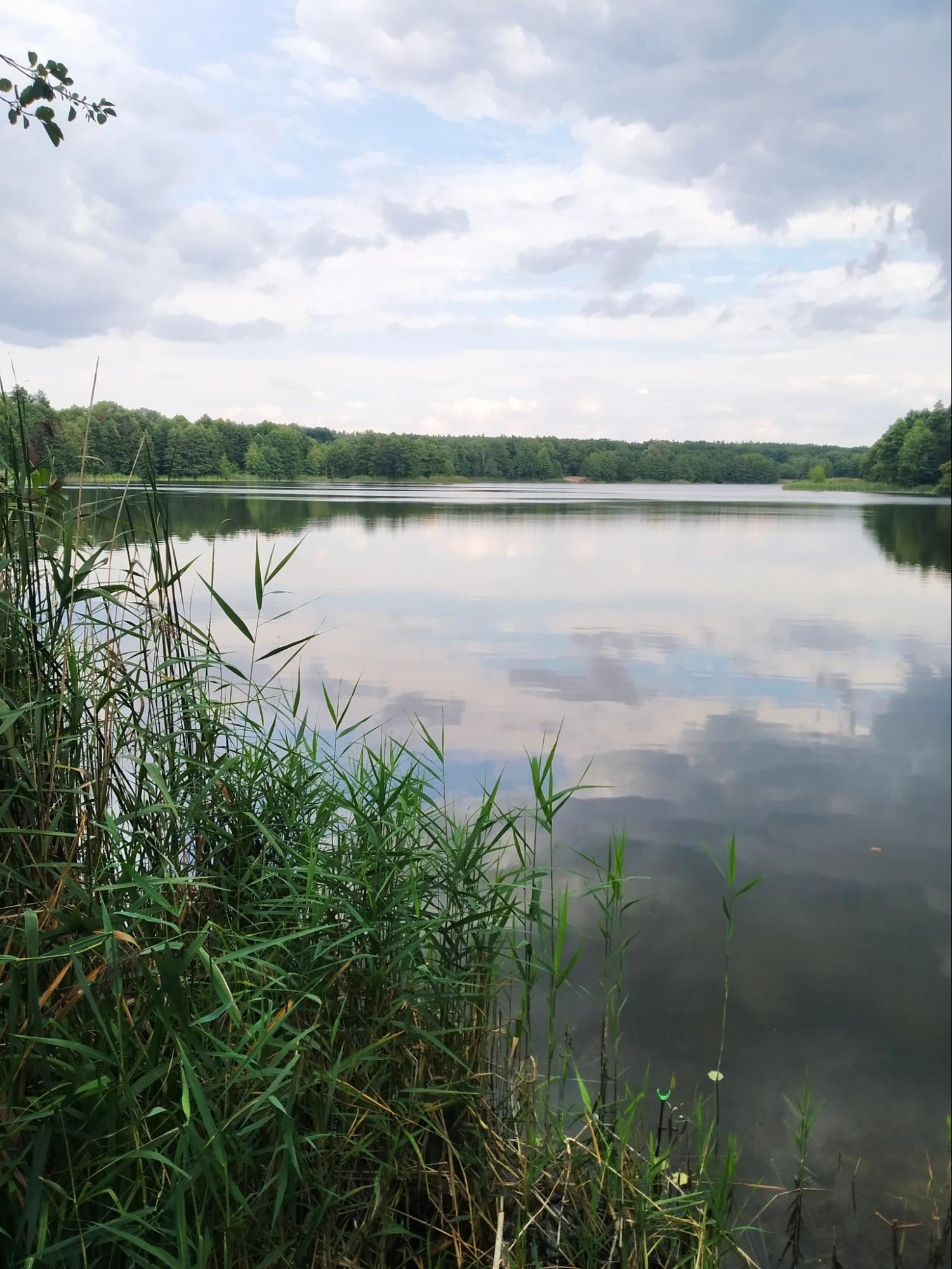
Lake Vidro, to which ecologists seek to grant the status of a reserve/Photo from the Facebook page of KECC
For this purpose, they also created a petition on the site Electronic Petitions of the Kyiv City Council, and it gained half of the required number of votes in a month.
"Lake Vidro is the cleanest lake in Kyiv, unique in its beauty and a favorite recreation spot of Kyivans," the KECC notes. Recently, Aldrovanda vesiculosa L, a rare plant listed in the Red Book of Ukraine was found here. Vidro Lake is an oasis of biodiversity and a refuge for many species of plants and animals, including rare and protected species.
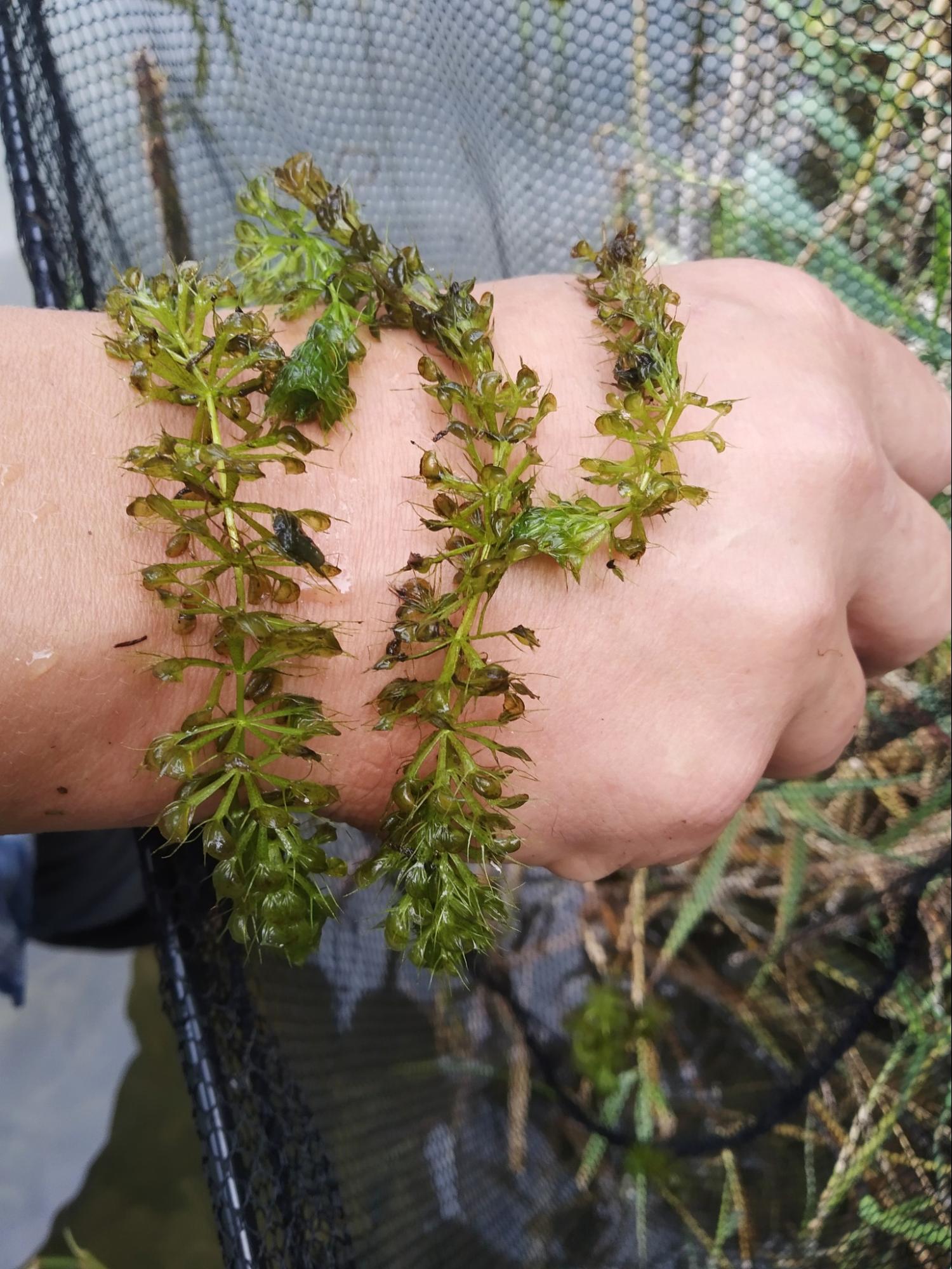
A rare Aldrovanda vesiculosa L plant was discovered in Vidro Lake/Photo from the KECC Facebook page
The transparency of the water in Vidro reaches two meters or more.
"Unfortunately, developers who want to build a unique corner of Kyiv's wild nature liked this area," ecologists sound the alarm. You can sign the petition to protect Vidro Lake here.
If you want to support the creation of Vikova Dibrova, add your vote here.
Just a few minutes of your time — and the good deed is done! You can be an eco-activist even on the couch.

Як на Одещині рятували червонокнижних земноводних після підриву Каховської ГЕС

Ukrainian initiative on the forefront of digital cleanup: reducing carbon footprint and combating global warming






